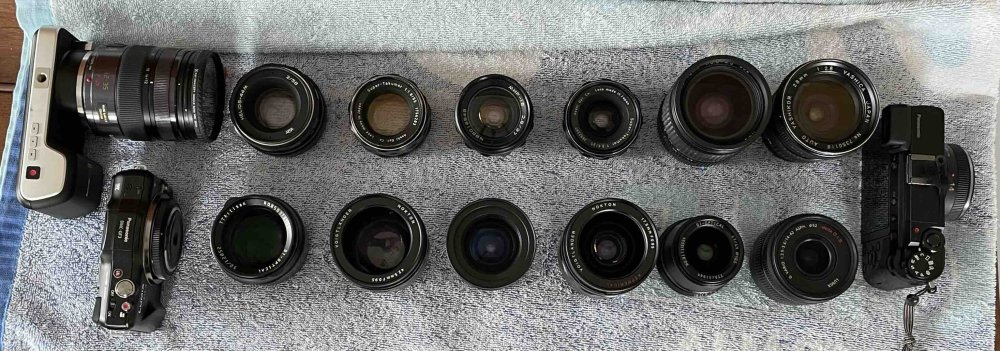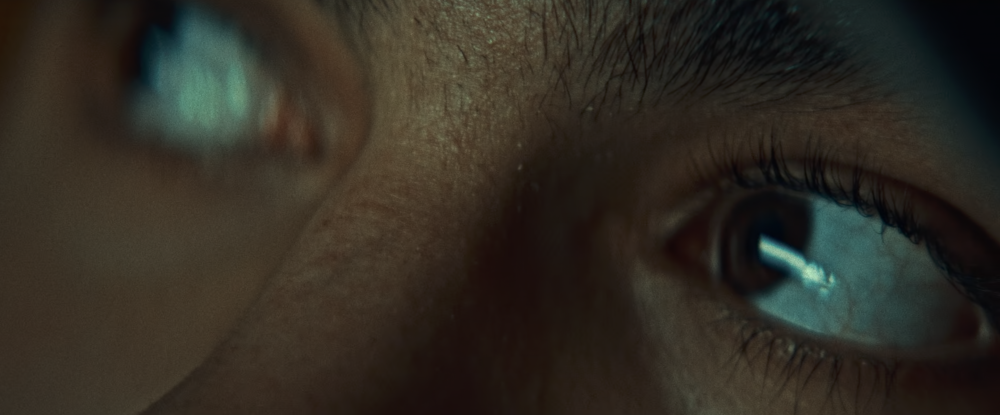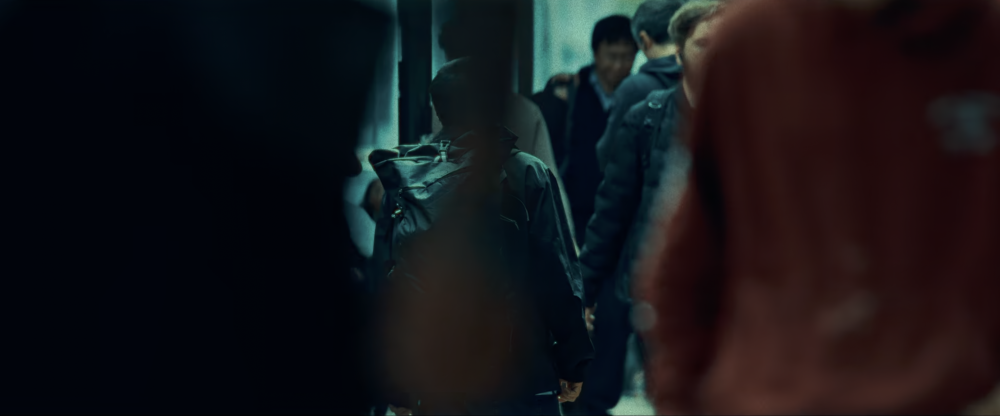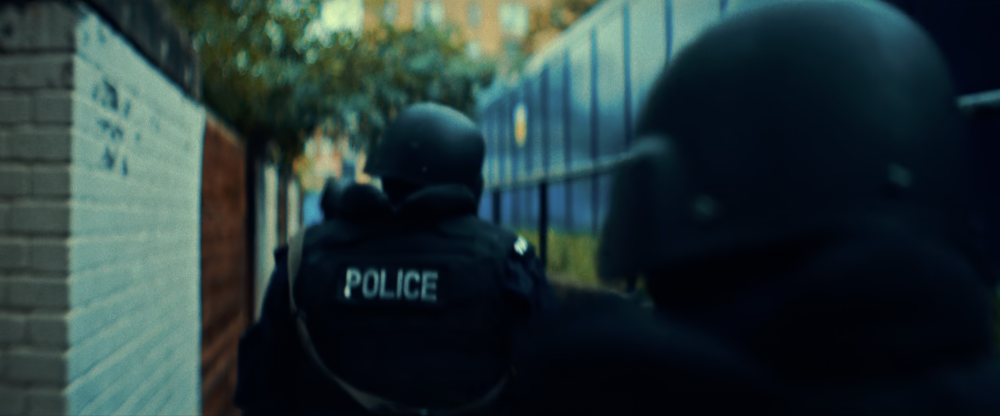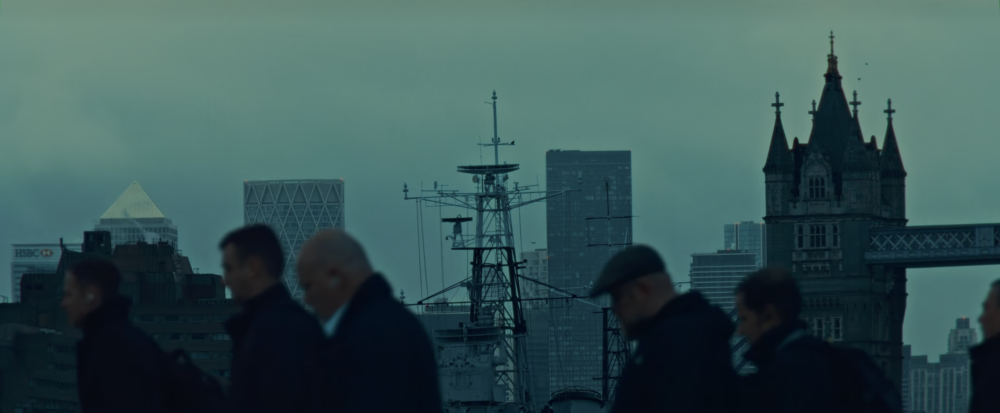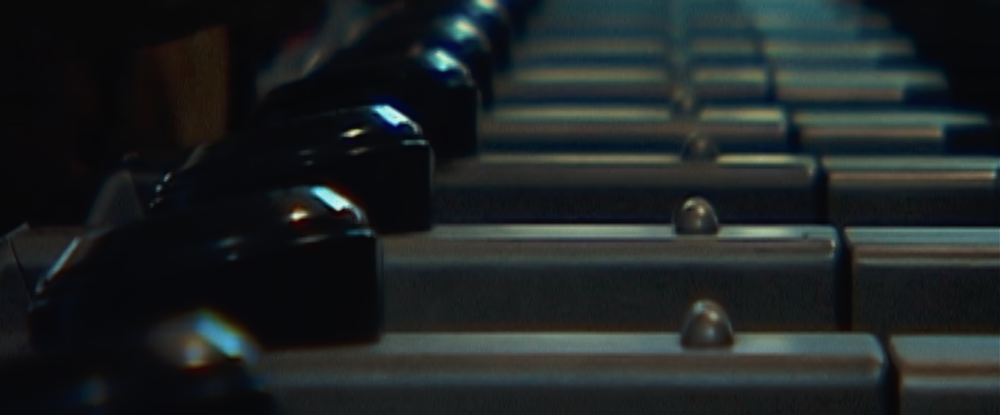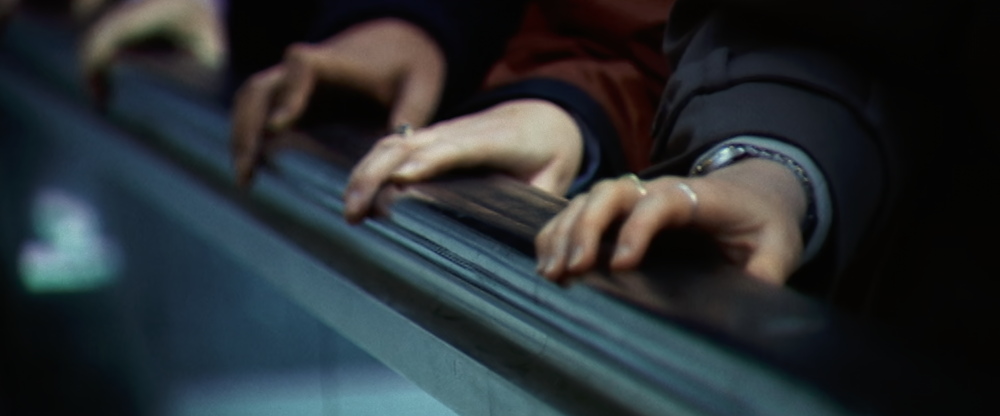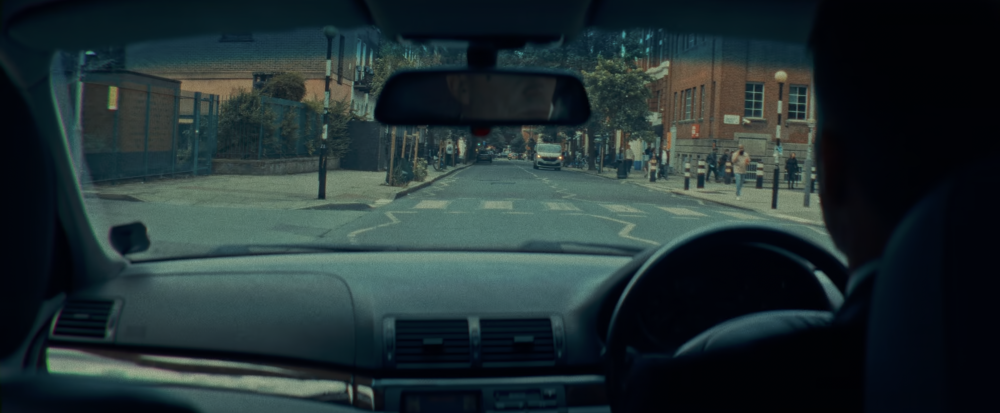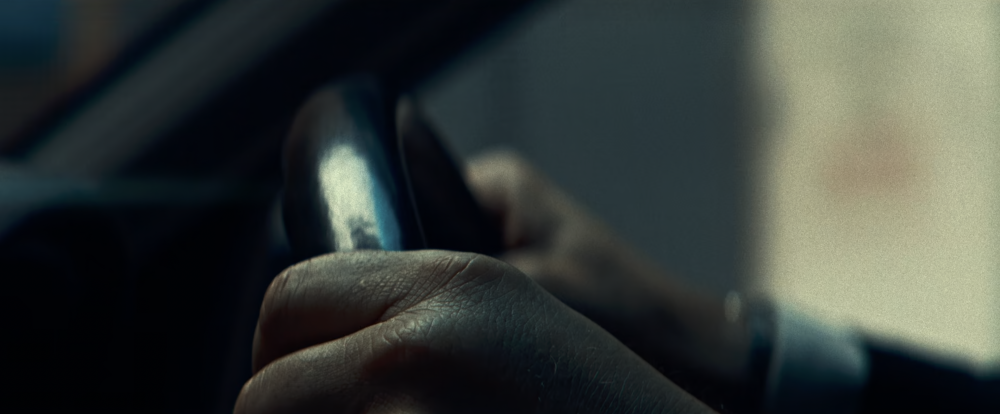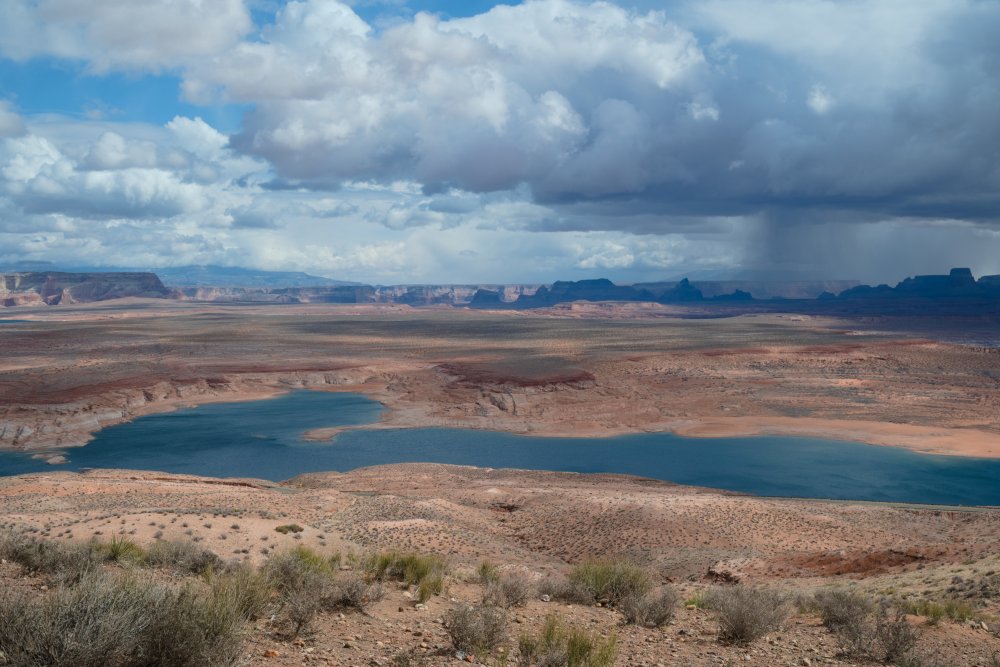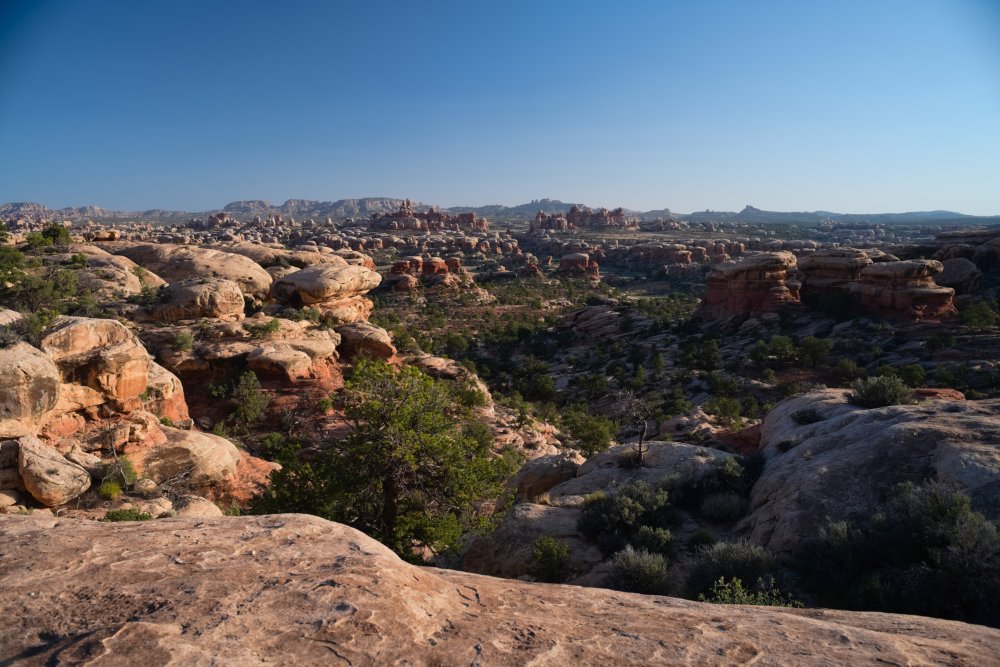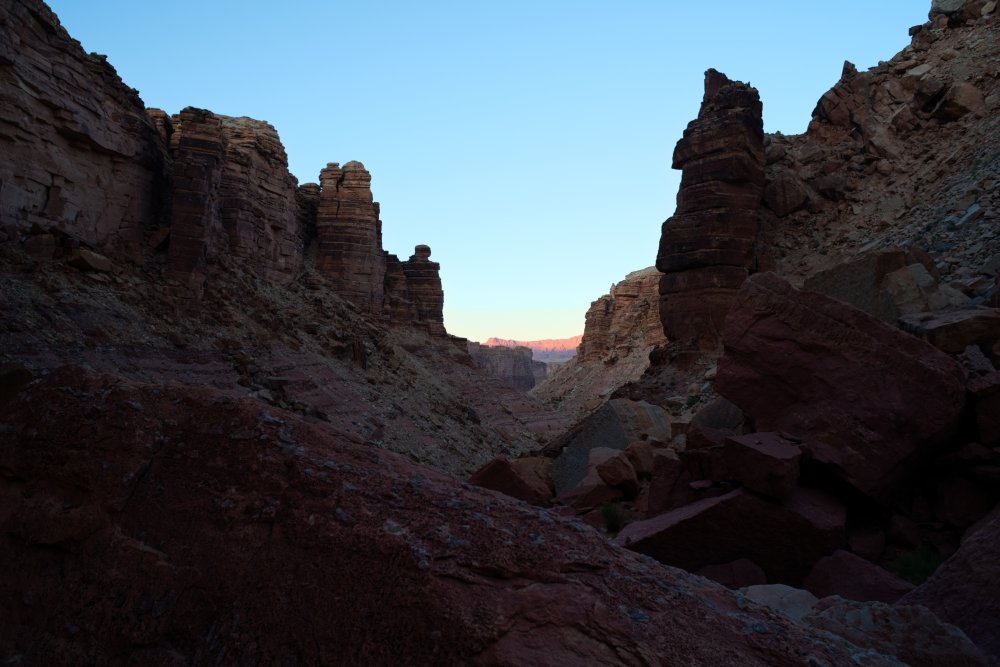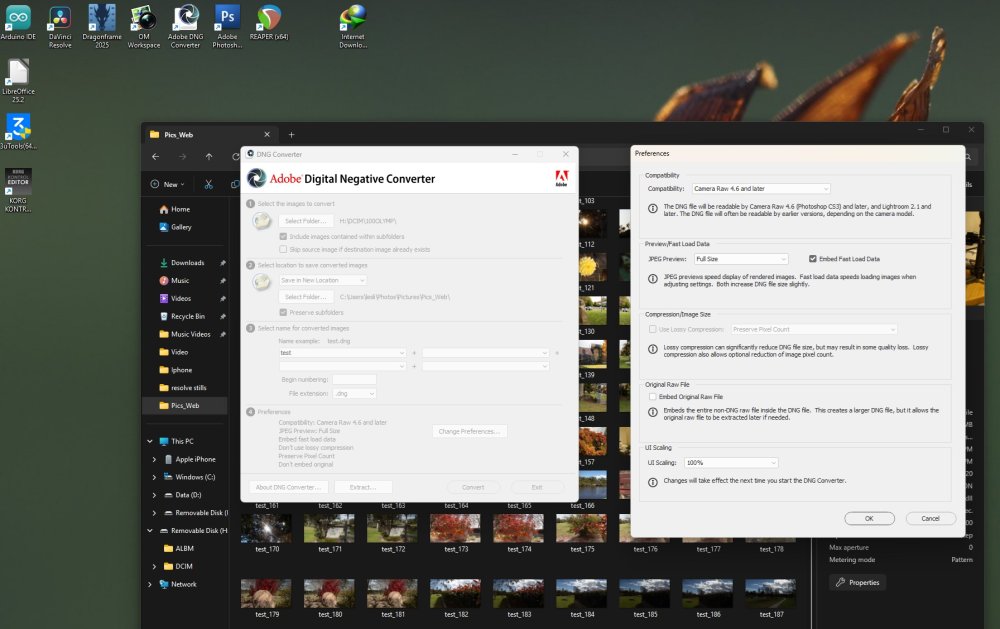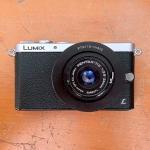All Activity
- Past hour
-
I can't imagine having to shoot raw for a feature documentary as opposed to h264/h265. I can't be filling up 4 terabytes a day for weeks or months or years of shooting. I guess when these codecs were the best internal codecs on offer (GH5, S1, S1H, S5) Panasonic put more effort into perfecting them.
-
 TrueIndigo reacted to a post in a topic:
The Aesthetic (part 2)
TrueIndigo reacted to a post in a topic:
The Aesthetic (part 2)
-
 ac6000cw reacted to a post in a topic:
The Aesthetic (part 2)
ac6000cw reacted to a post in a topic:
The Aesthetic (part 2)
- Today
-
 eatstoomuchjam reacted to a post in a topic:
The Aesthetic (part 2)
eatstoomuchjam reacted to a post in a topic:
The Aesthetic (part 2)
-
I suspect that's because the in-camera LUT is processing the video before it's compressed, but in post you are working video after compression (which is likely to have reduced or smoothed over some detail, depending on picture content and bitrates).
-
There is a time for a clean aesthetic. There is a time for a more timeless more filmic aesthetic. There are times for a far grittier aesthetic too. Those who have been following my other thread will know I've mostly got my travel / walk-around AF setup nailed. (GH7 and GX85 bodies combined with the 14-140mm zoom, 12-35mm F2.8 zoom, 9mm F1.7, and 14mm F2.5 pancake lens) This setup will give a relatively clean starting point which can be graded to create a pretty wide range of looks. However, not everything can be achieved in post. I have also collected a bunch of modern MF lenses and vintage lenses over the years and these might be useful in creating other looks that I can't do in post with the above kit. So I'm trying to work out if I should just archive them or if they're still good for anything I want to do, and if so, what might that be? I've looked through my continually growing collection of lens comparisons, but found nothing conclusive. Thus begins a moderately sized lens / camera test... The setups included in the test are below. The details in brackets are the FF equivalents. OG BMPCC + 12-35mm F2.8 (35-100mm F8.0) This setup is included as I think it will be a reference for the rest of the setups (at worst) and might end up becoming part of my standard kit (at best). GF3 + 15mm F8 (30mm F16) This setup is included as it's essentially a modern Super-8mm camera, and considering it is absolutely tiny and takes the same batteries as the GX85 it's almost inconsequential to bring on a trip. GX85 with: Modern: Panasonic 12-35mm F2.8 (24-70mm F5.6) Modern: Panasonic 14mm F2.5 (28mm F5) Modern: Panasonic 14-42mm f3.5-5.6 (28-84mm F7.0-11.2) Modern MF: TTartisans 17mm F1.4 (34mm F2.8) Vintage: Cosmicar 12.5mm F1.9 SB (36mm F5.5) Modern MF: Voigtlander 17.5mm F0.95 (35mm F1.9) Vintage: SB + Yashica 28mm F2.8 (40mm F4.0) Vintage: SB + Tokina 28-70mm F3.5-4.5 (40-100mm F5.0-6.4) Vintage: SB + Takumar 35mm F3.5 (50mm F5) Vintage: SB + Mir-1B 37mm F2.8 (53mm F4) Vintage: SB + Takumar 55mm F1.8 (78mm F2.6) Vintage: SB + Helios 44M 58mm F2.0 (82mm F2.8) Modern MF: Voigtländer 42.5mm f0.95 (85mm F1.9) Modern MF: TTartisans 50mm f1.2 (100mm F2.4) I haven't included all my lenses, but the ones I have omitted have been included in other tests previously and are broadly similar to ones I have included, so if they become interesting as a result of this test I have some more reference materials. I watched a doco on Netflix the other day called Attack on London, and was really inspired by the look of the 'recreation' images they have obviously filmed for the doc, and seem to have used one of the filthiest anamorphic lenses around (and potentially added more dirt in post as well). Here are some screenshots.. These might not have been streamed at the highest bitrate available, but I don't care - they look great and have so much texture and feel. This isn't the exact aesthetic I'm going for, but it's one that I saw recently that has a lot of texture and FEEL. My hope is to work out what the ingredients are to getting this kind of feel and then work out when I would want it and then work backwards to what equipment and processes I'd use to get it. My initial impressions (guesses) are that the ingredients are: shallower DoF lower levels of sharpness decent amounts of grain film colours (especially having a tint and having subtractive sat) The above images have more elements to them than this, but I don't care much for things like CA etc, so I don't think they're part of the minimum required elements. I plan to shoot comparisons with the setups above in a range of different scenarios and then see what I can see, before moving onto the post workflows and what role those play.
-
18 hadn't changed as far as i remember. i suspected 19 or 20. i skipped 19 got 20 and things has changed... took a bit to figure it out. I also bought one of these on prime day, had it in the cart, was hoping it would come on sale and it did. Saved $20, so worthwhile waiting the extra week or so.
-
 maxJ4380 reacted to a post in a topic:
Share our work
maxJ4380 reacted to a post in a topic:
Share our work
-
Nice images! I feel like you've absolutely nailed the core concept - it's about capturing "the way they felt at the time". This is where the pixel peeing leads the creativity astray, it's not about capturing the way it appeared at the time, it's the way it felt at the time.
-
 kye reacted to a post in a topic:
Share our work
kye reacted to a post in a topic:
Share our work
-
It's been a while since I've been able to work on any kind of movie, but here are some recent landscapes photos. I'm not doing anything artistic, just trying to capture some of my favorite places the way they felt at the time. The only edits are very slight changes to saturation and exposure. 90% of my photos are from 10+ mile hikes so I only bring my lightweight 28mm and a CPL, but in this group is a rare photo taken from the roadside using a 24-105.
- Yesterday
-
Good to know. This is not going to be a ‘workhorse’ lens for me, but rather something to ‘fill in holes’ if you know what I mean and much more for photo than video and especially as a walk around one stop shop landscape lens. Yes I think it will work very well. I considered the 70-300 but decided I wasn’t really gaining anything over the 70-200 I already have except a less good lens. Also the Samyang 35-150 but I’d need (want) the battery grip for that and were back into big boy territory and no thanks. 28 and 40 are my to ‘go to’ focal lengths below 50 that I prefer to work with. They have a certain kind of look and especially with 28, it’s about as wide as you can go before any distortion begins to appear. So yes, ultimately and as soon as possible, I do want this lens because it ticks every single box I have below 50mm. Exactly why I chose it over the f2.8. Optically it’s very good and it’s actually OK in low light. And I think it’s slightly lighter even than the 28-45 Sigma?! Real world about the same but about as big and heavy as I prefer to go. I think so. Pretty confident that it will comfortably replace the A7RV and Zf, both cameras I love. The combo of glass, slightly less but I am going from 3 different mounts/brands to 1 single and that is a big deal plus 1 less body and 3 less lenses. It’s a good decision. I’ll find out next week when I am using it, but today (I’m on a job) back to the Sonykon’s!
-
The "I'M DONE" in the end was the chef's kiss.
-
 Emanuel reacted to a post in a topic:
Return of the Crop King, but only for RF? (Sigma 17-40 f1.8)
Emanuel reacted to a post in a topic:
Return of the Crop King, but only for RF? (Sigma 17-40 f1.8)
-

Return of the Crop King, but only for RF? (Sigma 17-40 f1.8)
Marcio Kabke Pinheiro replied to Al Dolega's topic in Cameras
Liked the lens, probably will get that in the future. Probably the casualties on my side will be the two Nocticrons, the 35mm and 50mm. Lovely and cute little lenses, but I almost do not use them - this year I probably only used the 18-50mm f/2.8 zoom and the Viltrox 75mm 1.2. -
The 28-200mm is a good lens. I tried two samples, both performed the same. Acceptably sharp wide open between 28mm and 40mm. A bit soft wide open between 50mm and 150mm and very soft wide open at 200mm. But increasing the aperture just by one stop make the lens much sharper and the lens is very good at 200mm f8. It's a very good compromis because when you look at by example the 12-60mm PL I also own, the 28-200mm is a 14-100 f2-f3.5 equivalent in M43. Even when stopped down to be as sharp at a good copy of the 12-60mm PL, the 28-200mm can do the equivalent of 14mm F2, 25mm f2.8, 50mm f3.5 and 100mm f4 while being sharp. You loose the 24mm wide angle but I think it's a good trade for most use. My only issue with this lens is it makes sometimes a short but loud motor noise and vibration (about 2s) when using it in video with the S1 and S5. No issue with the S5II, S1II and S1RII. If you like lenses with high contrast and good color rendering, the 28-45mm is really excellent. Mine is very sharp at 28mm and extremely sharp at 35mm and 45mm even wide open. The focal range can feel somewhat limited but there is no better 28mm on L mount except the overpriced 28mm APO Summicron. The 70-200mm S Pro f4 looks good to pair with the 28-200mm indeed, I have the 70-200mm S Pro f2.8 and while it's a sharp lens with pretty good rendering, the size is an issue, at least for me. Yes and I think you will appreciate the S1RII. Like I don't record a lot of fast motion, I begin to think I could sell my S1II as the S1RII is easier for me to work, I can get good detail rendering from the H265 8K files whereas I need to shoot almost exclusively in Prores Raw on the S1II because I don't like the weird detail processing on the H265 or Prores files out of this camera.
-
That 28-45mm is a very nice lens.. This guy was using the S1II but using the sigma 28-45mm 1.8 lens
-
I’ve just picked up this lens. Or at least it’s arriving Monday. There are still some big black holes for me within L Mount glass but I came to the conclusion yesterday that this lens could have a place in my kit. I have been back and forth on the 28-105 and the 28-45 and would 100% have gone for the 28-105 had it been internal zoom which for anything 1kg or over, is a 99% must have. But it isn’t and I’m not going to say never to this lens, but right now, it doesn’t suit me even though the focal range and aperture are great. The 28-45 is probably happening, but going to shoot a few weddings on the new all L Mount set up first because it could work in isolation, but really I would like to pair it with a lens that does not, )but I hope will soon) exist; the 45-90mm f1.8 internal zoom. But in the meantime, I have the 70-200mm f4 (internal zoom!) for indoor work and will now have the 28-200 for outdoor, more stills than video I think, but we’ll see… I hate the external zoom but on a lens that weighs sub 500g, I can live with it. Also, by limiting myself to these smaller primes and zooms, I can skip the battery grip which for something like the 28-105, becomes essential to me for handling purposes, but I would rather keep everything as compact and light as possible without sacrificing too much performance. 4 bodies + 3 primes + 3 zooms gives a lot of options/combinations and as things stand is not only 1 less body than I have been using to date, but 3 rather than 2 less lenses so an even bigger bonus.
- Last week
-
 j_one reacted to a post in a topic:
Panasonic Lumix S1R Mark II coming soon
j_one reacted to a post in a topic:
Panasonic Lumix S1R Mark II coming soon
-
Hi Thank you so much for taking the time to write this out, I appreciate it. Been pretty happy with the S1R2 mostly for stills so far, S52x's still do most of the video work for me (along with a Fuji X-H2S)
-
 ArashM reacted to a post in a topic:
Panasonic Lumix S1R Mark II coming soon
ArashM reacted to a post in a topic:
Panasonic Lumix S1R Mark II coming soon
-
 ita149 reacted to a post in a topic:
Panasonic Lumix S1R Mark II coming soon
ita149 reacted to a post in a topic:
Panasonic Lumix S1R Mark II coming soon
-
 ita149 reacted to a post in a topic:
Panasonic Lumix S1R Mark II coming soon
ita149 reacted to a post in a topic:
Panasonic Lumix S1R Mark II coming soon
-
It depends if you are doing a lot of run and gun, can't live without Open Gate (because I think this feature is not just usefull but also give a real full frame look to the image) and appreciate some tricks like DR BOOST (at the cost of high rolling shutter). If yes, the S1II and even the S1RII are really a good choice, even if you like photography and if you can afford the Leica APO Summicron SL and the 24-70mm/50mm S Pro. If you don't have the need for the best IBIS or don't need to record while walking, Nikon is maybe a better alternative. AF is generally better even if the S1II is really not bad and more accurate than the S5II and S1RII. If you shoot wildlife, Nikon is also a much better choice, especially with the Z8, because Nikon has more tele lenses , better RS, unlimited burst and no blackout. The S1 and S1RII, while they have very fast burst (70fps for the S1II), you can only shoot for about 2 seconds, which is ridiculous. The Nikon S f1.2 lenses are excellent, they are more affordable, faster and have deeper bokeh than the APO SL. However they are heavier, bigger, and maybe less suited for video. If you are on Windows and use Resolve, Nikon with N-raw is much easier to edit than Prores Raw, both the S1II and S1RII only have Prores Raw. N-Raw is supported by Resolve and you have the lenses corrections backed in the files, you can even choose to record N-Raw directly in 709. Prores Raw is supported by Premiere Pro but there is no WB/ISO option. You also have the option to record 6K60fps (Z6III) or 8K60fps (Z8), on the S1II you only have a slightly cropped 6k30fps, it's worse on the S1RII because of the big crop. Outisde of Raw I think I also prefer the output of the H265 codecs compared to Lumix, Nikon is sharper but retains more fine details. So to resume : -IBIS is much better on Lumix. -DR is slightly better on Lumix (with DR BOOST or DRE ON). -Lumix has more nice features than Nikon (Open Gate, Real Time Lut etc). -Color is subjective but I really like the output of the S1RII. -AF is slighter better with Nikon even if the S1II is now closer than ever. -Video quality (fine details) is slightly better on Nikon (in RAW they are the same but N-Raw allows 60fps raw no crop). -For wildlife, Nikon is better, but keep in mind the Z8 is heavier than both the S1II and S1RII. -Nikon has more great lenses, Leica ones are as good but much more expensive. For me, as I like to do a lot of run and gun, Lumix is still the better choice for video but I need more editing time to get what I want because of Prores Raw. For stills, I don't shoot a lot of wildlife but I really like the Nikon S 1.2 lenses rendering. Leica lenses are also stellar, but you trade fast aperture and bokeh for more POP and significantly less weight. I think the S1RII is maybe the better choice if you don't need to shot fast scenes because the 8K H265 quality is pretty good, the IBIS is excellent, the AF is enough for most things and you can record Open Gate. The S1II can be the best choice if you need low rolling shutter and want the best detail rendering (Prores Raw) IBIS and DR. Like the S1RII you have Open Gate, but the big issue for me is the detail rendering with non raw video. The Open Gate 7,2K and especially 8K just looks much better on the S1RII. The Z8 is probably the best choice for stills in most cases, especially for wildlife. The video is outstanding too. But the camera is not lightweight, the IBIS is also much worse. The Z6III is a very good compromise, not as big as the Z8, 6K60fps is more than enough because the detail rendering is great. Maybe there is some bad shadows noise at some ISO but I think the issue is overrated since the last firmware update, like the DR slightly worse below ISO 800 compared to the Z8, it's really hard to notice a difference. But it's maybe because I don't shoot at very high ISO. For now, I decided to keep only the S1RII,S1II and Z6III. I will wait only a few months, if the next Nikon Z (with RED) has better IBIS, the choice will be obvious for me. But if Panasonic releases some new S Pro lenses very soon, it will be much harder to choose which system to keep.
-
i think i'm on version 17.2.00 of dng converter, their all backwards compatible. I convert to camera raw 4.6 as its the last version listed for cs3. it pretty simple to use, select your directory and hit convert, er.. pick a directory to save your files otherwise you'll waste 10 minutes wondering where they went... Its a 1.6 gig dl which makes it a fair size. Its free as well. its a handy program, once you have a dng, the worlds your oyster. either photo or video editing, you can do image sequences as well, which avoids the banding you get with jpg's, if your into timelapse or hyperlapses or some form of animation. Camera Raw 2.4 and later: The DNG file will be readable by Camera Raw 2.4 (Photoshop CS) and later, and Lightroom 1.0 and later Camera Raw 4.1 and later: The DNG file will be readable by Camera Raw 4.1 (Photoshop CS3) and later, and Lightroom 1.1 and later. The DNG file will often be readable by earlier versions, depending on the camera model. Camera Raw 4.6 and later: The DNG file will be readable by Camera Raw 4.6 (Photoshop CS3) and later, and Lightroom 2.1 and later. The DNG file will often be readable by earlier versions, depending on the camera model. Camera Raw 5.4 and later: The DNG file will be readable by Camera Raw 5.4 (Photoshop CS4) and later, and Lightroom 2.4 and later. The DNG file will often be readable by earlier versions, depending on the camera model. Camera Raw 6.6 and later: The DNG file will be readable by Camera Raw 6.6 (Photoshop CS5) and later, and Lightroom 3.6 and later. The DNG file will often be readable by earlier versions, depending on the camera model. Camera Raw 7.1 and later: The DNG file will be readable by Camera Raw 7.1 (Photoshop CS6) and later, and Lightroom 4.1 and later. The DNG file will often be readable by earlier versions, depending on the camera model. Camera Raw 11.2 and later: The DNG file will be readable by Camera Raw 11.2(Photoshop 20) and later, and Lightroom 8.2 and later. The DNG file will often be readable by earlier versions, depending on the camera model. Camera Raw 12.4 and later: The DNG file will be readable by Camera Raw 12.4 (Photoshop 21) and later, and Lightroom 9.4 and later. The DNG file will often be readable by earlier versions, depending on the camera model. Camera Raw 13.2 and later: The DNG file will be readable by Camera Raw 13.2 (Photoshop 22) and later, and Lightroom 10.2 and later. The DNG file will often be readable by earlier versions, depending on the camera model. Custom: Backward Version: DNG 1.1, DNG 1.3, DNG 1.4, or DNG 1.6 (default 1.6)
-
I had a better look and they're not going directly from the sensor, they're going from an already made machine vision camera. https://machinevisionstore.com/Catalog/Details/992 https://machinevisionstore.com/content/downloads/basler/AviatorDatasheet.pdf These are used on assembly lines and such. It connects with Camera Link (which is an industrial standard for these kinds of cameras.) https://en.wikipedia.org/wiki/Camera_Link Maybe this thing isn't "faux" after all.
-
Wow, I'll have to look into this!! Sounds super useful if you want to share something quickly rather than publishing a set of finished stills. I have noticed over the years that I tend to continually refer back to the stills I have saved, so I've gotten much more organised in labelling them etc as they're more of a permanent reference than a temporary thing.
-
This is extremely helpful, and also a bit disappointing. Thank you so much for your detailed response. It seems like there is ample reason to hold out for the S1HII, still.
-
The 7.2 will be my new go to over my current slightly less than 6k from the S5ii. At least I think it is… 5.9 or something? Anyway… The 8.1 limited to 24p is a bit of a bummer but hey ho. I have not done any ‘scientific’ testing, but switched to that approach 1.5 years ago for other reasons, but I felt my work looked better immediately. Also using a 1/8th mist VND I am sure is responsible for zero moire. Ever. Plus ability to bake in the LUT plus twin card recording caused 4 winning points over Nikon, but Nikon does counter with superior lens options, especially with adapter E Mount as part of the equation. Super-tight call for me but the 4 winning points narrowly beat out the glass for me. They have 2 holes in the lineup for me: An equivalent of the Tamron 70-180mm f2.8 which is MUCH smaller and lighter than the Lumix or Sigma 70-200’s and there is NOTHING in L Mount even close. An equivalent to Sony’s 50-150mm f2. Grail lens right there for me. I now do not care about the weight because is just the PERFECT lens for me but in order to have it, I’d need to build a Nikon or Sony based system around it and Sony doesn’t even have 6k (yet, but less than great 8k in the A7RV and then you have to go AII or whatever it’s called) and with Nikon, a ton of stuff I’d need to give up. For pure stills, Nikon. For pure video, Lumix. For hybrid, I could make a case either way and have done based on capabilities for my specific needs sacrificing my perfect lens to do it with Lumix.
-
I don't recall if it was added in Resolve 18 or 19 but with the new feature you don't need to grab the still. It works in edit and color page, File -> Export -> Export Current Frame as Still (I have mapped to F4). What is great it keeps the folder selection and the file format but you can change it at anytime, the file name will use timeline name + a time code as default. So what I do is spacebar for play/pause, left or right arrow to select the best frame, hit F4 and Enter to save. Much faster that the old Still Grab process.
-
Thank you for your thoughts, Wondering Hypothetically if you were to start from scratch right now, would you still go Lumix or Nikon?
-
10 years down the road when computational photography in your phone allows an obviously superior IQ than that of a FF cam, who's gonna be clamoring for the old gear enough for corporations to make $$? Once that market truly dries, is this the kind of project that'll be left for the enthusiasts? Will niche' little private companies fill the void? Will there even be a void?
-
What specifically have you mapped to F4? Is it a two-step process to capture a still in the colour page, and then afterwards you have to export all the stills to the disk? or is there now a way to directly save a frame from the timeline straight to the disk? This is something many people have been wishing for..
-
I hadn't thought about that, but if that's an option, I guess I could have done it. Though at this point, I doubt I have an installer around for the old version. Yes, for someone who needs multiple or many Adobe products, the current pricing is somewhat advantageous vs the old pricing. A lot of people, me included, are not that person and use Lightroom almost exclusively. The only time I use Photoshop is when I need to run SRDx. The current cost for the entire suite is $70/month - over 3 years, that's $2,520. So... wow. That's an additional $20 in cost over $2,500. So it doesn't seem "much cheaper" to me. It seems to be "the same cost." This is the pitch that is made for subscription software. It's not applicable to most people. I use Lightroom often enough that it doesn't make sense to turn on and off my subscription all the time. There's no need to guess. They went with it because it radically increased their profits and gave them a steady predictable monthly revenue instead of an unpredictable spiky revenue that got reduced if people didn't like the new version. Now it doesn't matter if you don't like the new version. F U consumer, you are paying for it anyway. Here are some charts that show the true reason that Adobe went to a subscription model - prior to it, they had a pretty consistent/flat 4-5 billion dollars per year in revenue. This is plenty of money to develop their software. It has been on an upward ramp since then and now they are making 20 billion dollars per year. If it flattens again, expect them to increase subscription pricing to further enrich their shareholders. This is why subscription models exist - to enrich shareholders, not to make your life better. I used to work for a major e-commerce company - discussions of subscription billing, etc, were very rarely phrased in terms of the benefit to end users. https://www.macrotrends.net/stocks/charts/ADBE/adobe/revenue The free version is intended to stay. Petty said in their NAB livestream that he expects that, at some point, people will be asked to pay for upgrades to the Studio License to fund continuing development of Resolve. This is, for me, fully acceptable. My existing version of Resolve Studio will keep working as long as it needs to work and if I find the features in a new version to be compelling, I will pay them for it. This is a healthy business relationship.
-
I can't work with LR alone, I also need Photoshop to do any meaningful editing and finishing of photos. 20 years ago Photoshop cost about $700 which in today's money is $1150. If you don't need a new version in five years then the permanent licenses for PS and LR would have been roughly on par with the subscription cost (as the photographer's bundle), but I certainly want key software that I use updated more often than once in five years. And if you occasionally need Illustrator, Acrobat, Premiere etc. but not on a regular basis, the subscription makes access to those much cheaper as well (the full suite as a permanent license cost $2500 which would in today's money probably over $3000). Thousands, in any case. With subscription pricing you could just pay for a month or two and get the work done without having to purchase the lot. Although these programs have a lot features I don't need or use (since it's not only used by photographers but also various kinds of graphic designers and artists), I frequently see Adobe improve the software in ways that are meaningful to me. I obviously do not work for Adobe. My point is just that for me and others that I know, the subscription pricing made Adobe software accessible while previously it was not. My guess is that Adobe likely went with subscription pricing because they had a huge problem with pirated software as a lot of people chose not to pay but used cracked copies of the software, basically stealing. For video editing it makes a lot of sense to use Davinci Resolve since a lot of people prefer it to Premiere on its own merits, but it can be used for free (if you don't need certain features which require the paid version). It also supports Nikon N-RAW. However I suspect that eventually the free version disappears and this software will also become something you have to pay to use since software development is expensive.


